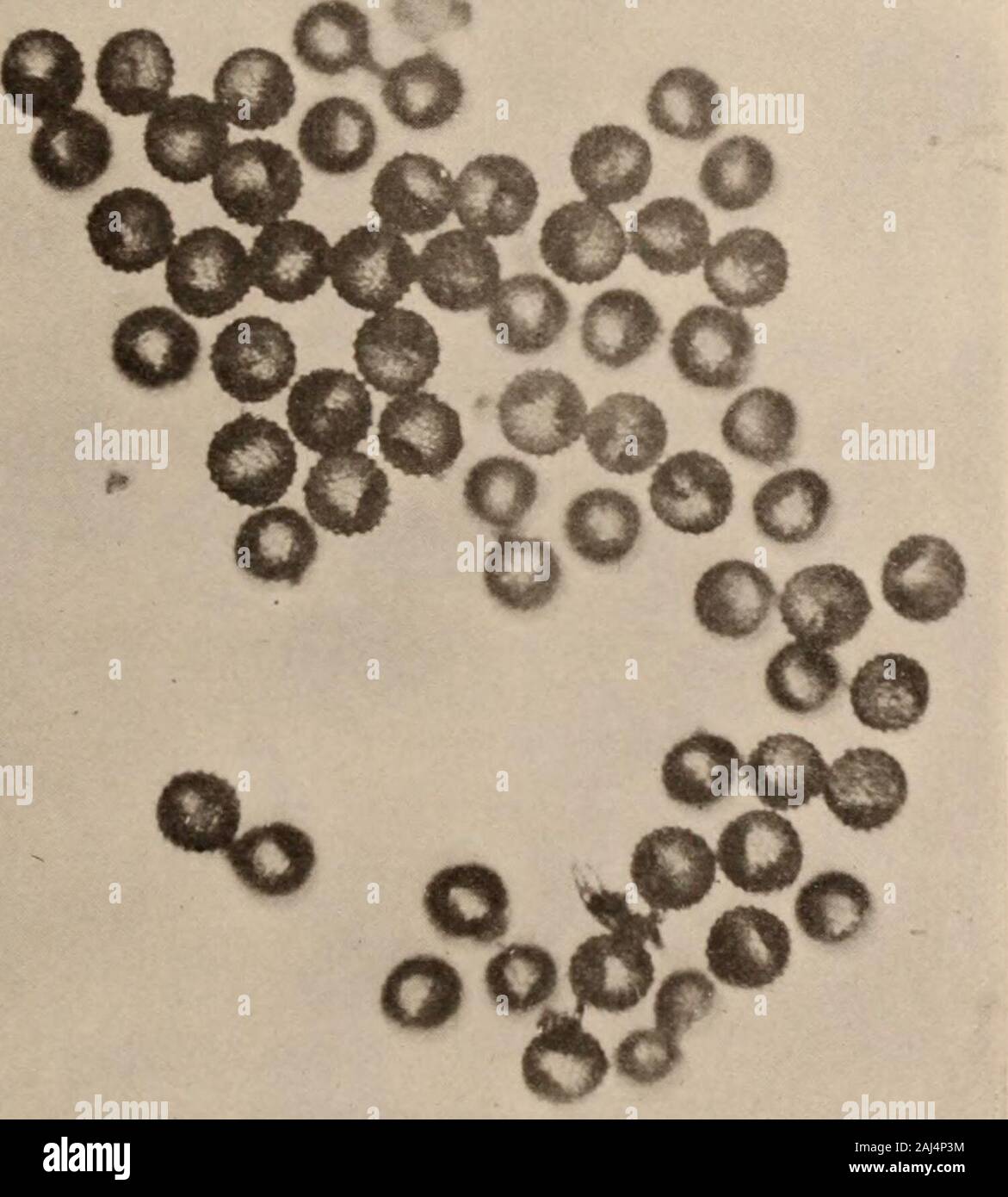Interstate medical journal . vided into four principal groups, which include all the principaltoxic pollens.3 These are as follows: PRINCIPAL GROUPS OF HAY FEVER POLLENS.(1) The ragweeds {Ambrosiacese), (2) grasses (Gramineae), ?Toxicity here refers to the positive reaction in hay fever subjects. Theexistence of ;i true t<.in iii these pollens is still under investigation. =The Immunizing Treatment of Hay Fever, W. Scheppcgrell, M. D., New YorkMedical Journal, Dec. 4, 1909. Boston Medical and Surgical Journal, June 28, 1917. Scheppegrell: Notes on the Treatment of Han Fever 489 (3) wormwoo

Image details
Contributor:
The Reading Room / Alamy Stock PhotoImage ID:
2AJ4P3MFile size:
7.1 MB (231.2 KB Compressed download)Releases:
Model - no | Property - noDo I need a release?Dimensions:
1500 x 1665 px | 25.4 x 28.2 cm | 10 x 11.1 inches | 150dpiMore information:
This image is a public domain image, which means either that copyright has expired in the image or the copyright holder has waived their copyright. Alamy charges you a fee for access to the high resolution copy of the image.
This image could have imperfections as it’s either historical or reportage.
Interstate medical journal . vided into four principal groups, which include all the principaltoxic pollens.3 These are as follows: PRINCIPAL GROUPS OF HAY FEVER POLLENS.(1) The ragweeds {Ambrosiacese), (2) grasses (Gramineae), ?Toxicity here refers to the positive reaction in hay fever subjects. Theexistence of ;i true t<.in iii these pollens is still under investigation. =The Immunizing Treatment of Hay Fever, W. Scheppcgrell, M. D., New YorkMedical Journal, Dec. 4, 1909. Boston Medical and Surgical Journal, June 28, 1917. Scheppegrell: Notes on the Treatment of Han Fever 489 (3) wormwoods (Artemisias), and (4) chenopodiums (Cheno-podiacese). The first includes not only the common ragweed {Ambrosiaelatior, Fig. 1), giant ragweed (Ambrosia trifida), and Westernragweed (Ambrosia psilostachya), but also the false ragweed(Gsertneria), marsh elder (Ivas), and cockle burs (Xanthiums).The golden rod (Solidago) and many other members of the Com-positae family, although not wind-pollinated, and therefore not caus-. Fig. 1.—Pollen of common ragweed (Ambrosia elatior). Magnified 500 diameters.Size. 15 microns. Principal cause of hay fever in the eastern and southernstates. Characteristic in appearance and reaction of the Ambrosiacetr group. ing hay fever except on direct inhalation, resemble the Ambrosiaceaegroup biologically and morphologically. The second group (Gvaminese) includes practically all the mem-bers of the grass family (Fig. 2), including the cultivated cereals, such as rye, wheat, and corn. From the standpoint of pollentherapy, this is fortunate, as there are nearly 5, 000 species ofgrasses. The wormwood (Artemisia) group is composed of about 200species. Our investigations have shown that these represent the 490 INTERSTATE MEDICAL JOURNAL important factor in hay fever in the Pacific and Rocky Mountainstates. The pollen of all the species bear a close resemblance, notonly microscopically (Fig. 3), but also in their hay fever reaction, which is ten times more